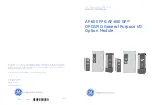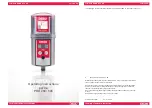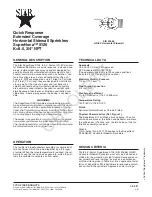
Commissioning and Configuration
EP8309-1022
56
Version: 2.0.0
5.3
Tacho analysis
Tacho analysis refers to velocity or frequency logging for two digital sensors mounted on one shaft (single-
shaft mode) or on two shafts (dual-shaft mode).
In single-shaft mode a plausibility check can be run for the two sensors (e.g. velocity deviation of the two
sensors).
The targets (sensor markings) should show a 90° overlapping signal when triggered. The minimum ON of
OFF time must not be less than 0.2ms, otherwise detection is not possible due to the sampling frequency.
The number of targets on the axis can be set in CoE object 0x80x0:11. In this way slower velocity/speed
detection with many targets or high velocity with few targets can be achieved.
Mode selection via the PDOs
The different modes are activated via the PDO assignment.
Single-shaft mode
The input PDO 0x1A02 activates the corresponding setting. The output data are always set.
Fig. 50: Tacho evaluation – single shaft mode
Process data
Value
Description
Error Input A
The measured velocity/frequency is lower than that of track B, or it is 0 (sensor faulty)
Input Status A
Status of input A
Error Input B
The measured velocity/frequency is lower than that of track A, or it is 0 (sensor faulty)
Input Status B
Status of input B
Speed below
threshold
The velocity is lower than the limit in CoE 0x8020:12
Rotational Speed Threshold
or = 0
Rotational Speed Rotational speed and frequency, shown as a function of CoE object 0x80x0:15
Rotation Direction 0: rising edge of input A occurs before rising edge of input B
















































